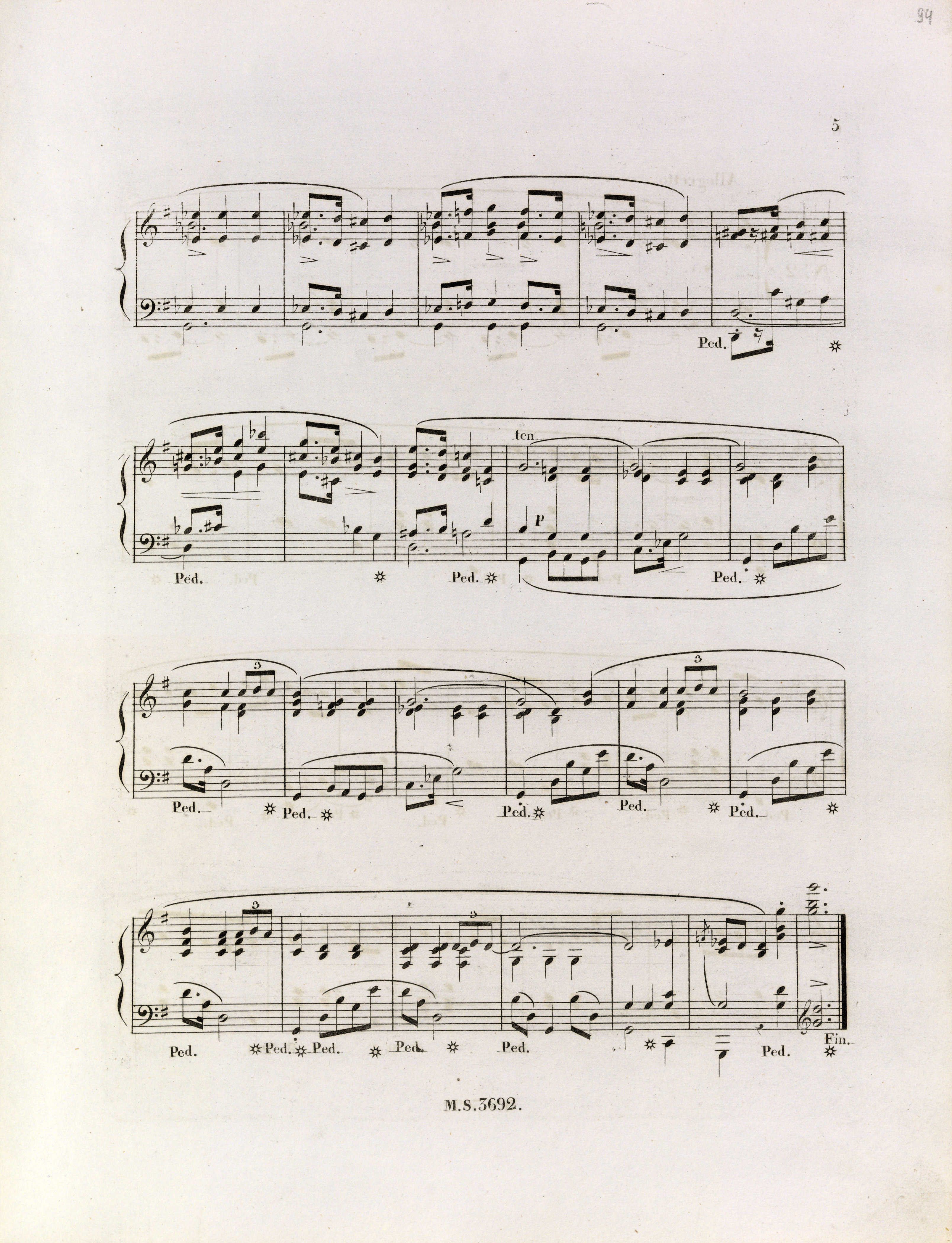



It is difficult to determine Chopin's final intention here. The authenticity of the version with b 1 seems to be unquestionable: Chopin wrote it in A1 and probably also in [A2], which could be deducted from the traces of correction of a
1 seems to be unquestionable: Chopin wrote it in A1 and probably also in [A2], which could be deducted from the traces of correction of a  (b
(b 1) to a
1) to a  (b1) visible in GE1. However, that correction requires a more detailed analysis:
(b1) visible in GE1. However, that correction requires a more detailed analysis:
- The above thesis, according to which the
 was repeated after the Stichvorlage, i.e. [A2], is not the only possible explanation of the presence of that sign in the proof copy of GE1. Repetition of the version of A1 in [A2] is natural, as long as it is correct. However, if Chopin had committed a mistake in A1, copying the mistake to the second autograph would already be much less likely.* Therefore, it is likely that [A2] included a
was repeated after the Stichvorlage, i.e. [A2], is not the only possible explanation of the presence of that sign in the proof copy of GE1. Repetition of the version of A1 in [A2] is natural, as long as it is correct. However, if Chopin had committed a mistake in A1, copying the mistake to the second autograph would already be much less likely.* Therefore, it is likely that [A2] included a  here, while the original version of GE1 is a mistake of the engraver.
here, while the original version of GE1 is a mistake of the engraver. - It is equally uncertain who the author of the very correction was. Regardless of the fact whether b
 1 is correct or not, the correction could have been performed by Chopin: he could have changed his original concept or simply corrected the mistake. However, it could have also happened without Chopin's participation: the mistake of the engraver could have been detected during routine editorial proofreading; if the text had been compliant with the Stichvorlage, the change could have been introduced by the reviser on the basis of a comparison with b. 74. The fact that the reviser, following the course of music, could have taken the decision to perform such an intervention is shown by the example of EE, in which b1 is almost certainly a result of a revision.
1 is correct or not, the correction could have been performed by Chopin: he could have changed his original concept or simply corrected the mistake. However, it could have also happened without Chopin's participation: the mistake of the engraver could have been detected during routine editorial proofreading; if the text had been compliant with the Stichvorlage, the change could have been introduced by the reviser on the basis of a comparison with b. 74. The fact that the reviser, following the course of music, could have taken the decision to perform such an intervention is shown by the example of EE, in which b1 is almost certainly a result of a revision.
The likelihood of Chopin's possible mistake in A1 mentioned above is not negligible. An erroneous, unconscious replacement of a sign (also of a letter or a speech sound) by another similar sign is a well-known phenomenon in psychology. Instead of the intended  , Chopin could have entered a
, Chopin could have entered a  under the influence of numerous flats in this and adjacent bars. Such a lapsus calami – entering a
under the influence of numerous flats in this and adjacent bars. Such a lapsus calami – entering a  instead of a
instead of a  – probably happened, e.g. in the autograph of the Mazurka in A Minor, Op. 59 No. 1, b. 112.
– probably happened, e.g. in the autograph of the Mazurka in A Minor, Op. 59 No. 1, b. 112.
As far as the style is concerned, b1 seems to be more natural, since the version with b 1, which does not engage in the alternation of b
1, which does not engage in the alternation of b and b, so clearly emphasised in b. 73-76, seems to be quite monotonous; however, above all, it distorts the tonal stability by introducing a G minor chord as the tonic at the end of that bar.
and b, so clearly emphasised in b. 73-76, seems to be quite monotonous; however, above all, it distorts the tonal stability by introducing a G minor chord as the tonic at the end of that bar.
Therefore, given the choice between two not entirely certain versions, out of which at least one must be authentic, in the main text we follow the principal source, i.e. GE1; in turn, we consider the version of A1 (→FE) to be an equal variant.
*After all, it is not entirely impossible. While writing [A2] on the basis of A1, written with visible care, Chopin must have believed in the general correctness of the text; since he did not assume the existence of such serious mistakes, he would concentrate on a further completion and specification of the performance indications.
Compare the passage in the sources »
category imprint: Differences between sources; Corrections & alterations
issues: EE revisions, Authentic corrections of GE
notation: Pitch

